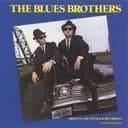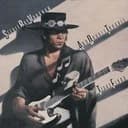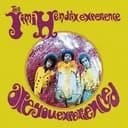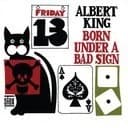The B♯ Blues Scale illustrates an important principle in music theory: enharmonic equivalence. Every pitch in the B♯ Blues Scale sounds identical to its counterpart in the C Blues Scale—B♯ sounds the same as C, D♯ as E♭, E♯ as F, and so on. The most challenging note is F♯♯ (F-double-sharp), which is enharmonically equivalent to G. While this notation is theoretically correct within the B♯ key system (maintaining the proper letter sequence B-D-E-F-F-A-B), it creates practical difficulties for sight-reading and communication among musicians. In over a century of recorded blues, jazz, and rock music, you'll find virtually no examples of pieces written in B♯ Blues—composers and arrangers consistently choose C Blues instead. This preference isn't arbitrary; it reflects the practical reality that simpler notation facilitates better performance and understanding. However, studying enharmonic relationships like this deepens your understanding of how Western music theory organizes pitch and why certain notational choices become standard practice. The blues scale's characteristic "bent" sound and emotional expressiveness remain identical regardless of whether you're thinking in B♯ or C.
Enharmonic Equivalents and Practical Usage
When encountering any reference to B♯ Blues Scale in theoretical discussions or educational materials, immediately recognize it as enharmonically equivalent to C Blues Scale and use the C notation in practice. This enharmonic relationship extends to all musical contexts: chord progressions, improvisation patterns, and compositional applications are identical between B♯ and C. If you're working with a piece of music that, for some theoretical reason, is notated in B♯ (perhaps as part of an enharmonic modulation or theoretical exercise), you can mentally transpose everything to C for easier comprehension. The same fingering patterns on guitar, keyboard positions on piano, and embouchure approaches on wind instruments apply equally to both notations since they produce the same pitches. In educational settings, B♯ might appear in exercises designed to test your understanding of enharmonic equivalents or to practice reading complex key signatures, but these remain academic exercises rather than practical music notation. For all blues, jazz, rock, and R&B applications, default to the C Blues Scale and its straightforward notation.
Improvisation and Application
If you theoretically wanted to improvise using the B♯ Blues Scale (though again, you would use C Blues in practice), the approach would mirror exactly the techniques used with C Blues. The scale works over the 12-bar blues progression—in this case, B♯7-E♯7-B♯7 (though this would be written as C7-F7-C7 in real-world notation). Emphasize the blue note (F♯♯, or G in practical terms) by approaching it from either direction and resolving to F♯ (which sounds like F♯, not F natural) or G (written as F♯♯ in B♯ notation). The complexity of tracking these enharmonic relationships while improvising demonstrates exactly why musicians prefer C Blues—the cognitive load of thinking "F♯♯ resolves to G" versus simply "F♯ is the blue note" significantly impacts spontaneous musical creativity. All the classic blues licks, bending techniques, and rhythmic patterns that define blues improvisation remain identical regardless of notation, reinforcing that enharmonic equivalents represent the same musical content through different theoretical lenses.
Comparison with Related Scales
The B♯ Blues Scale relates to the B♯ Minor Pentatonic Scale exactly as C Blues relates to C Minor Pentatonic—by adding the ♭5 degree (F♯♯). The B♯ Minor Pentatonic consists of B♯-D♯-E♯-F♯-A♯, while the blues scale adds F♯♯ (G) between F♯ and G, creating B♯-D♯-E♯-F♯-F♯♯-A♯. This demonstrates how blues scales are constructed consistently across all keys, even when those keys are theoretical rather than practical. Similarly, the B♯ Blues Scale could be compared to B♯ Natural Minor (if such a scale file exists), though the blues scale's simplified hexatonic structure omits certain notes from the full natural minor scale. In practical terms, comparing B♯ Blues to anything requires mentally converting to C Blues for comprehension, further reinforcing why the C notation is universally preferred. Understanding these relationships helps clarify scale construction principles and enharmonic theory, even when the specific key signature remains impractical for real-world performance.
Historical Context and Theoretical Significance
The B♯ Blues Scale exists purely as a theoretical construct and has no historical performance tradition. The blues scale emerged from African-American musical traditions in the Deep South, where musicians worked within practical key signatures that suited their instruments and voices. The keys commonly used in blues music—C, G, E, A, and their relative minors—were chosen for their accessibility on guitar, piano, and harmonica, not for theoretical completeness. No historical blues, jazz, or rock recording has ever been performed or notated in B♯, making this scale an interesting theoretical exercise rather than a living musical tradition. However, understanding why B♯ Blues exists in theory but not in practice provides valuable insights into how music notation systems work, why certain conventions develop, and how theoretical completeness sometimes conflicts with practical usability. For all musical applications, refer to the C Blues Scale, which represents the same pitches with notation that has been tested and refined through over a century of blues, jazz, and rock performance by legendary artists like B.B. King, Eric Clapton, Stevie Ray Vaughan, and countless others who have shaped modern popular music.





